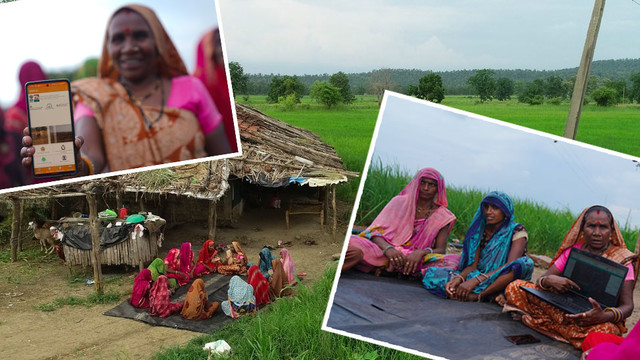Author Q&A: Resilience – the science of adaptation to climate change
Saleemul Huq discusses a new book exploring the term ‘resilience’ – one of today’s hottest buzzwords in climate and development. The book includes a chapter he has co-authored with researchers Yousuf Mahid and Nadine Suliman from the International Centre for Climate Change and Development.
IIED senior fellow Saleemul Huq is an expert on the links between climate change and sustainable development, particularly from the perspective of developing countries.
Also the the director of the International Centre for Climate Change and Development (ICCCAD) in Bangladesh, Huq was the lead author of the chapter on Adaptation and Mitigation in the Intergovernmental Panel on Climate Change fourth assessment report.
Q: Why is 'Resilience: The Science of Adaptation to Climate Change' an important book?
SH: The book’s overall aim is to bring together different perspectives on the notion of resilience from a variety of sources and voices. The term ‘resilience’ has become very popular in the worlds of development and climate change – but it has different meanings in different contexts.
Resilience in terms of biophysical resilience and ecosystem resilience has particular meanings; when used in the context of civil engineering, in construction of roads and bridges, it has quite another. And in recent years, the term is being used extensively in climate-change dialogue, again with a specific meanings associated with it.
So the book explores these different aspects and notions of resilience and finds common ground – particularly in the context of development and climate change.
Q: You co-author the chapter on 'Evolution of Climate Change Adaptation Policy and Negotiation'. What’s it about?
SH: I co-wrote this chapter alongside Yousuf Mahid and Nadine Suliman, both researchers from the International Centre for Climate Change and Development.
The chapter looks at the term resilience and how it is used. In general global discourse around climate change, people tend to refer to resilience. But when you cross into more specific climate policy dialogue, the term ‘adaptation’ is used. The UNFCCC, for example, doesn’t use resilience. They consider it an undefined term and instead refer to adaptation, which has a narrower definition.
So, there’s this fuzziness between being resilient to the adverse impacts of climate change and adapting to these impacts.
Our chapter explores this different terminology. We take resilience to mean having the ability to adapt to the impacts of climate change, and from there we explore two different terms used in the context of adaptation.
The first is incremental adaptation. This is when you are managing the risk of climate change – this might be through an early warning system that alerts communities to floods, cyclones, or hurricanes. You can minimise damage by being better prepared – it doesn’t mean avoiding the impacts, but damage can be managed by anticipating and being prepared to respond.
The second is transformational adaptation. This is a more forward-looking aspect of adaptation where communities not only minimise damage caused by climate change but, through long-term planning, can improve their conditions.

Here in Bangladesh, many people live in low-lying coastal areas. These communities are adapting incrementally – they are managing their situation, for example by responding to the sea-level rise and salinity intrusion. But in the long run they will not be able to continue living there – this will certainly be the case for younger generations.
These communities need to reach the stage of transformational adaptation – in this case empowering and building the capacity of young girls and boys so they don’t simply become farmers and fishers like their parents, with all the climate vulnerabilities these jobs bring. With a better education the younger generation can move to towns and cities where there are better job opportunities and so improve their future prospects. This shift is transformational – people have greater control over their circumstances rather than being forced to migrate due to climate change.
Q: Who should read this book?
SH: The book would work well as a reference tool, to be used by students and academics who are studying the topic of resilience – they’ll be able to dip into chapters they’re interested in. Anyone studying development, resilience or climate change more broadly would find the various chapters useful depending on their area of focus. It would also be useful for practitioners who are interested in delving deeper into terminology.
Understanding terminology is so important for engaging with the climate change debate. We are too quick to slip into jargon. Climate change is impacting every person in every country on every continent – we need to be very careful with the language we use when talking to a broader audience.
In my weekly climate change op-ed for the Daily Star, Bangladesh’s largest circulating daily English-language newspaper, I’m careful to explain any technical terms I use, to make points very clear and explicit – and I get lots of feedback from readers saying how helpful this is. People in Bangladesh hear about climate change all the time. They want to know what’s happening. But material they read is often complicated and packed with jargon.
Climate change is a daily reality for these communities: they need to understand it. Ideas must be taken from first principle and language must be explained. With the term resilience now being used by so many actors – from donors to governments, implementing agencies to academics – we need to build a clearer understanding of what resilience looks like.
Our chapter will help unpack the term by demonstrating, through examples, how incremental adaptation and transformational adaptation plays out at community level.
This interview was compiled by Teresa Corcoran (teresa.corcoran@iied.org), communications content officer, IIED's Communications Group.
Resilience: The Science of Adaptation to Climate Change, edited by Zinta Zommers and Keith Alverson (2018), available to purchase from Elsevier, 376 pages, eBook (ISBN: 9780128118924), paperback (ISBN: 9780128118917)


